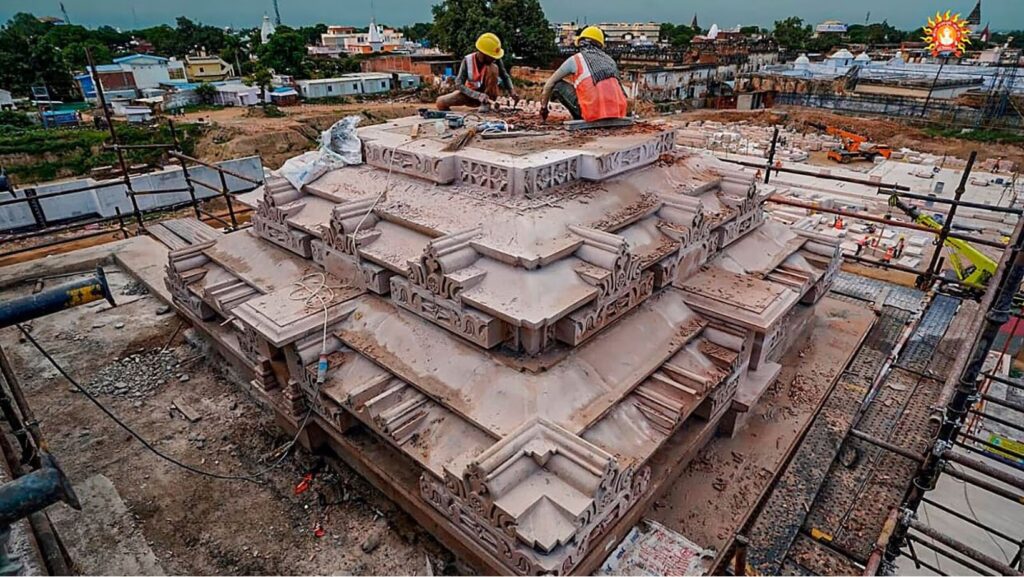The commencement of the Ram Mandir in Ayodhya, a profoundly momentous and historically significant occurrence, has stirred immense curiosity and interest among the public. In this extensive piece, we explore the specifics of the individual who presided over the inauguration of the Ram Mandir in Ayodhya, illuminating this extraordinary chapter in Indian history.
Who will inaugurate Ram temple in Ayodhya?
PM Narendra Modi will inaugurate Ayodhya Ram temple on the scheduled date of inauguration. Ayodhya Ram Temple inauguration date has been set for 22 January 2024, preparations for inauguration and puja will start from 14 January 2024.
Also read – How to Get Free Entry Pass for Ayodhya Diwali 2023
The Historic Ram Mandir in Ayodhya
The Ram Janmabhoomi Temple, known as the Ram Mandir, occupies a hallowed position within Hinduism and is situated in Ayodhya, Uttar Pradesh. Erected on the exact spot of Lord Rama’s birth, a highly venerated deity in Hinduism, the temple’s building and inauguration bear monumental significance, influencing not only the faithful but the entire nation.
The Ayodhya Dispute: A Longstanding Saga
The Ayodhya dispute, centered around the site where the Ram Mandir now stands, was a complex legal and religious issue. It spanned several decades and involved various court battles and negotiations. The dispute revolved around the claim to the land by both Hindu and Muslim communities.
The Role of the Indian Judiciary
The Indian judiciary vigilantly oversaw the resolution of the Ayodhya dispute, culminating in a historic verdict by the Supreme Court of India on November 9, 2019, which favored the construction of the Ram Mandir on the contested grounds.
Inauguration by Prime Minister Narendra Modi
On the 5th of August, 2020, the historic unveiling of the Ram Mandir in Ayodhya transpired, graced by an exclusive assembly of esteemed personalities and revered spiritual guides. Prime Minister Narendra Modi, a central figure instrumental in the temple’s manifestation, assumed a pivotal role in orchestrating the inaugural celebration.
Also read – What is Kosi Parikrama? Ayodhya’s Sacred Journey
The Historic Speech by Prime Minister Modi
During the inauguration, Prime Minister Modi delivered a significant speech, highlighting the cultural and spiritual importance of the Ram Mandir. He emphasized the need for unity, harmony, and the spirit of ‘Sabka Saath, Sabka Vikas‘ (Together with All, Development for All).
The Ceremonial Laying of the Foundation Stone
Before the actual inauguration, a ceremonial laying of the foundation stone was performed. This ritual marked the formal beginning of the temple’s construction and was conducted with utmost religious reverence.
The Contribution of Devotees
The construction of the Ram Mandir was made possible through the generous contributions of countless devotees from across the country and around the world. The ‘Shri Ram Janmabhoomi Teerth Kshetra’ trust managed the donations and oversaw the construction work.
The Architectural Marvel
The Ram Mandir is not just a religious symbol but also an architectural marvel. The temple’s design showcases a harmonious blend of ancient and modern architectural elements. It stands as a testament to the rich cultural heritage of India.
Also read – Ayodhya Diwali: Experiencing the Grand Aarti 2023
The Importance of the Ram Mandir
The Ram Mandir holds immense religious and cultural importance for millions of Hindus worldwide. It signifies the culmination of a long-cherished dream and reinforces the faith of millions in Lord Rama.
Conclusion
The inauguration of the Ram Mandir in Ayodhya by Prime Minister Narendra Modi was a momentous occasion that marked the realization of a cherished dream for millions. It signified the triumph of unity and harmony, reinforcing the cultural and spiritual values that define India. The Ram Mandir stands as a symbol of devotion, faith, and the rich heritage of the nation.
